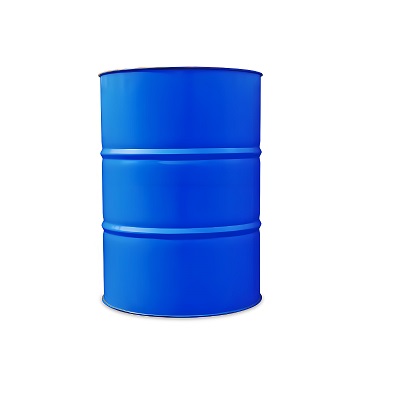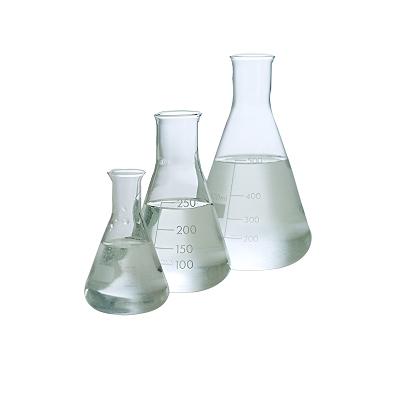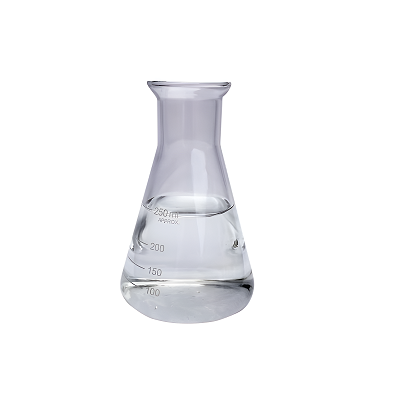

Sodium carbonate CAS 497-19-8
——————
CAS number : 497-19-8
molecular formula : CH2O3.2Na
EINECS : 207-838-8
——————
Email : info@deshangchem.com
Mobile : 8613153039501
TEL : +86-531-88752665
English synonyms
ASH;Sodium carbonate solution;Sodium carbonate-12C, 13C-depleted;ODA ASH;SODA ASH LIGHT & SODA BI CARBONATE;SODA ASH (LIGHT AND DENSE );ANHYDROUS SODIUM CARBONATE;SODA ASH 99% MIN
Related categories
Pharmaceutical intermediates; light metals; Grignard reagents; solvents; organic chemistry; custom synthesis products; professional reagents; inorganic compounds and salts; genomics and molecular diagnostics; acids; food additives; Ba sodium carbonate; inorganic bases; inorganic chemical products; Cd Nitrate; Inorganic salt; Spectrum; Sodium; Volumetric titration solution; Organic chemical raw material; Inorganic chemical raw material; Inorganic salt; Chemical product - inorganic chemical; Chloride; Chemical product - organic chemical; Ready-to-use solution; Molecular biology Chemicals - ready-to-use solutions; carbonates; bagged products; organic chemical raw materials; chemical synthesis; S-ZTitration; salt solutions; solution containers (VOLPAC); synthetic reagents; acidity regulators; chemical synthesis; Reagents; Biochemistry; Microorganisms; Pharmaceutical excipients; Synthetic material intermediates; Biochemical reagents; Basic organic reagents; Chemical industry; Main products; Food additives; Raw materials; Auxiliaries; Inorganic acids; Chemical materials; Sodium sodium; Chemical intermediates; Chemical raw materials; inorganic chemical raw materials; alkalis; inorganic; pharmaceutical raw materials; carbonates; general biochemical reagents - inorganic salts; standard products; daily chemicals; organic chemical products; inorganic substances; organic raw materials;试剂;Inorganics;InorganicBasesVolumetricSolutions;AlphabeticalListings;Q-S;StableIsotopes;ByReferenceMaterial;Concentrates(e.g.FIXANAL);ReferenceMaterialHydrochloricacidTitration;SaltConcentrates;Chromatography/CEReagents;EluentconcentratesforICAlphabetic;IonChromatography;S;SN-SZ;metalcarbonate;MaterialsScience;MetalandCeramicScience;Salts;SodiumSalts;SyntheticReagents
Introduction
The chemical formula of sodium carbonate is Na2CO3, commonly known as soda ash, soda, soda ash, and washing soda. It is usually a white powder and a strong electrolyte. The density is 2.532g/cm3, and the melting point is 851°C. It is easily soluble in water and has the property of salt. It is a weak acid salt, slightly soluble in absolute ethanol, insoluble in propanol, and undergoes hydrolysis reaction after being dissolved in water. , so that the solution is alkaline and has a certain degree of corrosiveness. It can be neutralized with acids to generate corresponding salts and release carbon dioxide. It can be decomposed at high temperature to generate sodium oxide and carbon dioxide. Long-term exposure to the air can absorb moisture and carbon dioxide in the air, generate sodium bicarbonate, and form hard lumps. It has strong hygroscopicity and is easy to form hard lumps, and it does not decompose under high temperature. Sodium carbonate and water form Na2CO3·10H2O, Na2CO3·7H2O, and Na2CO3·H2O three hydrates, among which Na2CO3·10H2O is the most stable, and the heat of solution in water is very small. It is mostly used in the photographic industry, and its trade name is carbon oxide. Na2CO3·10H2O is also called crystal soda, which is easy to weather in dry air. In the past, crystal soda was often used in household washing and washing wool, so it is also called "washing soda". In the past, the folks in our country used to use "caustic soda" that can both wash clothes and leaven dough, which is made by stirring soda ash and a large amount of water (plus some baking soda (NaHCO3), its water content is more than 50%. Carbonic acid When sodium dissolves in water, it shows an endothermic reaction and is easily weathered in the air. Na2CO3 7H2O is unstable and can only be precipitated from a saturated solution of sodium carbonate in the range of 32.5 to 36°C. Sodium carbonate is a weak acid and strong base salt (soda ash is a salt , not alkali, but the solution is strongly alkaline). Na2CO3 produced by chemical methods is purer than trona, so people call it "soda ash".
Chemical properties
| Melting point | 851°C(lit.) |
| Boiling point | 1600°C |
| Density | 2.53 |
| Refractive index | 1.535 |
| Storage conditions | 15-25°C |
| Solubility | H2O:1Mat20°C,clear,colorless |
| Shape | Solid |
| Color | White |
| Specific gravity | 2.532 |
| Acidity coefficient(pKa) | (1)6.37,(2)10.25(carbonic(at25℃) |
| pH value | 10.52(1mMsolution);10.97(10mMsolution);11.26(100mMsolution); |
| Water solubility | 22g/100mL(20ºC) |
| Sensitive | Hygroscopic |
| Maximum wavelength(λmax) | λ:260nmAmax:0.01λ:280nmAmax:0.01 |
| Merck | 14,8596 |
| BRN | 4154566 |
| Stability | Stable.Incompatible with powdered alkaline earth metals,aluminium,organic nitro compounds,fluorine,alkalimetals,nonmetallic oxides,concentrated sulfuric acid,oxides of phosphorus. |
| InChIKey | CDBYLPFSWZWCQE-UHFFFAOYSA-L |
| CAS database | 497-19-8(CASDataBaseReference) |
The pure product of anhydrous sodium carbonate is white powder or fine granules. Soluble in water, the aqueous solution is strongly alkaline. Slightly soluble in ethanol, insoluble in acetone.
Use
● One of the basic chemical raw materials, widely used, is an important raw material for glass, soap, detergent, textile, leather, spices, dyes, medicines, etc.
● Used as an analytical reagent, also used in the pharmaceutical industry and photographic plate making
● Widely used in glass products, chemicals, papermaking, metallurgy, medicine, textile and food industries
● Special reagent for color TV
● Used in the food industry as a neutralizer and leavening agent, such as in the manufacture of amino acids, soy sauce and flour-based foods such as steamed buns and bread. It can also be made into alkaline water and added to pasta to increase elasticity and extensibility.
● Used as detergent for wool rinsing, bath salt and medicine, alkaline agent in tanning leather.
● Most of it is used in industry, and a small part is used for civilian use. In the soda ash of industry purpose, it is mainly applied to light industry, building materials and chemical industry, accounting for about 2/3: followed by metallurgy, textiles, petroleum, defense, and pharmaceutical. The glass industry is the largest consumer sector of soda ash, and each ton of glass consumes O.2t of soda ash. In the chemical industry, it is used to make sodium silicate, sodium dichromate, sodium nitrate, sodium fluoride, baking soda, borax, and trisodium phosphate. In the metallurgical industry, it is used as a smelting flux, a flotation agent for ore dressing, and a desulfurizer in steelmaking and antimony smelting. Used as water softener in printing and dyeing industry. In the tanning industry, it is used for degreasing raw hides, neutralizing chrome tanned leather and increasing the alkalinity of chrome liquid. It is also used in the production of synthetic detergent additive sodium tripolyphosphate and other sodium phosphate salts.
● As a buffer, neutralizer and dough improver, it can be used in cakes and pasta, and it can be used in moderation according to production needs.
● Mainly used in float glass, picture tube glass bulb, optical glass, etc. It can also be used in other departments such as chemical industry and metallurgy. The use of heavy soda ash can reduce the flying of alkali dust, reduce the consumption of raw materials, improve working conditions, and improve product quality. At the same time, it can reduce the erosion of alkali powder on refractory materials and prolong the service life of the kiln.
● Basic chemical raw material, widely used in medicine, papermaking, metallurgy, glass, textile, dyestuff and other industries.
● Basic chemical raw material, widely used in medicine, papermaking, metallurgy, glass, textile, dyestuff and other industries, as leavening agent in food industry
● Used as analytical reagent, dehydrating agent, battery additive, etc.
Production method
● At present, the industrial production of heavy soda ash with light soda ash as raw material includes solid phase hydration method, liquid phase hydration method and extrusion method, and evaporation method and carbonation method with trona as raw material. The latter two methods have been widely used in industry. Partially mentioned sodium carbonate, so only describe three methods using soda ash as raw material. The solid-phase hydration method hydrates high-temperature light soda ash with hot water at 50-70°C at 90-97°C to generate sodium carbonate monohydrate, which is calcined at 130-150°C and then sieved to obtain heavy Quality soda ash products. Its Na2CO3+H2O→Na2CO3·H2ONa2CO3·H2O[△]→Na2CO3+H2O liquid phase hydration method high-temperature light soda ash is dissolved in water and circulating mother liquor at about 100 ℃ to obtain a saturated solution and carry out hydration reaction, and pump it to crystallization device. Cool down to 80-90°C to generate sodium carbonate monohydrate suspension, thicken and separate to produce heavy soda ash. Its reaction formula is the same as the solid phase hydration method. Extrusion method The high-temperature soda ash (150-160°C) from the alkali warehouse is extruded into a hard sheet with a thickness of about 2mm under a pressure of 5000-7000kg/cm2, and then crushed and screened to obtain a heavy soda ash product with a suitable particle size. Large grains return to broken. The pellets are re-extruded and recycled separately.

Sodium carbonate CAS 497-19-8
English synonyms
ASH;Sodium carbonate solution;Sodium carbonate-12C, 13C-depleted;ODA ASH;SODA ASH LIGHT & SODA BI CARBONATE;SODA ASH (LIGHT AND DENSE );ANHYDROUS SODIUM CARBONATE;SODA ASH 99% MIN
Related categories
Pharmaceutical intermediates; light metals; Grignard reagents; solvents; organic chemistry; custom synthesis products; professional reagents; inorganic compounds and salts; genomics and molecular diagnostics; acids; food additives; Ba sodium carbonate; inorganic bases; inorganic chemical products; Cd Nitrate; Inorganic salt; Spectrum; Sodium; Volumetric titration solution; Organic chemical raw material; Inorganic chemical raw material; Inorganic salt; Chemical product - inorganic chemical; Chloride; Chemical product - organic chemical; Ready-to-use solution; Molecular biology Chemicals - ready-to-use solutions; carbonates; bagged products; organic chemical raw materials; chemical synthesis; S-ZTitration; salt solutions; solution containers (VOLPAC); synthetic reagents; acidity regulators; chemical synthesis; Reagents; Biochemistry; Microorganisms; Pharmaceutical excipients; Synthetic material intermediates; Biochemical reagents; Basic organic reagents; Chemical industry; Main products; Food additives; Raw materials; Auxiliaries; Inorganic acids; Chemical materials; Sodium sodium; Chemical intermediates; Chemical raw materials; inorganic chemical raw materials; alkalis; inorganic; pharmaceutical raw materials; carbonates; general biochemical reagents - inorganic salts; standard products; daily chemicals; organic chemical products; inorganic substances; organic raw materials;试剂;Inorganics;InorganicBasesVolumetricSolutions;AlphabeticalListings;Q-S;StableIsotopes;ByReferenceMaterial;Concentrates(e.g.FIXANAL);ReferenceMaterialHydrochloricacidTitration;SaltConcentrates;Chromatography/CEReagents;EluentconcentratesforICAlphabetic;IonChromatography;S;SN-SZ;metalcarbonate;MaterialsScience;MetalandCeramicScience;Salts;SodiumSalts;SyntheticReagents
Introduction
The chemical formula of sodium carbonate is Na2CO3, commonly known as soda ash, soda, soda ash, and washing soda. It is usually a white powder and a strong electrolyte. The density is 2.532g/cm3, and the melting point is 851°C. It is easily soluble in water and has the property of salt. It is a weak acid salt, slightly soluble in absolute ethanol, insoluble in propanol, and undergoes hydrolysis reaction after being dissolved in water. , so that the solution is alkaline and has a certain degree of corrosiveness. It can be neutralized with acids to generate corresponding salts and release carbon dioxide. It can be decomposed at high temperature to generate sodium oxide and carbon dioxide. Long-term exposure to the air can absorb moisture and carbon dioxide in the air, generate sodium bicarbonate, and form hard lumps. It has strong hygroscopicity and is easy to form hard lumps, and it does not decompose under high temperature. Sodium carbonate and water form Na2CO3·10H2O, Na2CO3·7H2O, and Na2CO3·H2O three hydrates, among which Na2CO3·10H2O is the most stable, and the heat of solution in water is very small. It is mostly used in the photographic industry, and its trade name is carbon oxide. Na2CO3·10H2O is also called crystal soda, which is easy to weather in dry air. In the past, crystal soda was often used in household washing and washing wool, so it is also called "washing soda". In the past, the folks in our country used to use "caustic soda" that can both wash clothes and leaven dough, which is made by stirring soda ash and a large amount of water (plus some baking soda (NaHCO3), its water content is more than 50%. Carbonic acid When sodium dissolves in water, it shows an endothermic reaction and is easily weathered in the air. Na2CO3 7H2O is unstable and can only be precipitated from a saturated solution of sodium carbonate in the range of 32.5 to 36°C. Sodium carbonate is a weak acid and strong base salt (soda ash is a salt , not alkali, but the solution is strongly alkaline). Na2CO3 produced by chemical methods is purer than trona, so people call it "soda ash".
Chemical properties
| Melting point | 851°C(lit.) |
| Boiling point | 1600°C |
| Density | 2.53 |
| Refractive index | 1.535 |
| Storage conditions | 15-25°C |
| Solubility | H2O:1Mat20°C,clear,colorless |
| Shape | Solid |
| Color | White |
| Specific gravity | 2.532 |
| Acidity coefficient(pKa) | (1)6.37,(2)10.25(carbonic(at25℃) |
| pH value | 10.52(1mMsolution);10.97(10mMsolution);11.26(100mMsolution); |
| Water solubility | 22g/100mL(20ºC) |
| Sensitive | Hygroscopic |
| Maximum wavelength(λmax) | λ:260nmAmax:0.01λ:280nmAmax:0.01 |
| Merck | 14,8596 |
| BRN | 4154566 |
| Stability | Stable.Incompatible with powdered alkaline earth metals,aluminium,organic nitro compounds,fluorine,alkalimetals,nonmetallic oxides,concentrated sulfuric acid,oxides of phosphorus. |
| InChIKey | CDBYLPFSWZWCQE-UHFFFAOYSA-L |
| CAS database | 497-19-8(CASDataBaseReference) |
The pure product of anhydrous sodium carbonate is white powder or fine granules. Soluble in water, the aqueous solution is strongly alkaline. Slightly soluble in ethanol, insoluble in acetone.
Use
● One of the basic chemical raw materials, widely used, is an important raw material for glass, soap, detergent, textile, leather, spices, dyes, medicines, etc.
● Used as an analytical reagent, also used in the pharmaceutical industry and photographic plate making
● Widely used in glass products, chemicals, papermaking, metallurgy, medicine, textile and food industries
● Special reagent for color TV
● Used in the food industry as a neutralizer and leavening agent, such as in the manufacture of amino acids, soy sauce and flour-based foods such as steamed buns and bread. It can also be made into alkaline water and added to pasta to increase elasticity and extensibility.
● Used as detergent for wool rinsing, bath salt and medicine, alkaline agent in tanning leather.
● Most of it is used in industry, and a small part is used for civilian use. In the soda ash of industry purpose, it is mainly applied to light industry, building materials and chemical industry, accounting for about 2/3: followed by metallurgy, textiles, petroleum, defense, and pharmaceutical. The glass industry is the largest consumer sector of soda ash, and each ton of glass consumes O.2t of soda ash. In the chemical industry, it is used to make sodium silicate, sodium dichromate, sodium nitrate, sodium fluoride, baking soda, borax, and trisodium phosphate. In the metallurgical industry, it is used as a smelting flux, a flotation agent for ore dressing, and a desulfurizer in steelmaking and antimony smelting. Used as water softener in printing and dyeing industry. In the tanning industry, it is used for degreasing raw hides, neutralizing chrome tanned leather and increasing the alkalinity of chrome liquid. It is also used in the production of synthetic detergent additive sodium tripolyphosphate and other sodium phosphate salts.
● As a buffer, neutralizer and dough improver, it can be used in cakes and pasta, and it can be used in moderation according to production needs.
● Mainly used in float glass, picture tube glass bulb, optical glass, etc. It can also be used in other departments such as chemical industry and metallurgy. The use of heavy soda ash can reduce the flying of alkali dust, reduce the consumption of raw materials, improve working conditions, and improve product quality. At the same time, it can reduce the erosion of alkali powder on refractory materials and prolong the service life of the kiln.
● Basic chemical raw material, widely used in medicine, papermaking, metallurgy, glass, textile, dyestuff and other industries.
● Basic chemical raw material, widely used in medicine, papermaking, metallurgy, glass, textile, dyestuff and other industries, as leavening agent in food industry
● Used as analytical reagent, dehydrating agent, battery additive, etc.
Production method
● At present, the industrial production of heavy soda ash with light soda ash as raw material includes solid phase hydration method, liquid phase hydration method and extrusion method, and evaporation method and carbonation method with trona as raw material. The latter two methods have been widely used in industry. Partially mentioned sodium carbonate, so only describe three methods using soda ash as raw material. The solid-phase hydration method hydrates high-temperature light soda ash with hot water at 50-70°C at 90-97°C to generate sodium carbonate monohydrate, which is calcined at 130-150°C and then sieved to obtain heavy Quality soda ash products. Its Na2CO3+H2O→Na2CO3·H2ONa2CO3·H2O[△]→Na2CO3+H2O liquid phase hydration method high-temperature light soda ash is dissolved in water and circulating mother liquor at about 100 ℃ to obtain a saturated solution and carry out hydration reaction, and pump it to crystallization device. Cool down to 80-90°C to generate sodium carbonate monohydrate suspension, thicken and separate to produce heavy soda ash. Its reaction formula is the same as the solid phase hydration method. Extrusion method The high-temperature soda ash (150-160°C) from the alkali warehouse is extruded into a hard sheet with a thickness of about 2mm under a pressure of 5000-7000kg/cm2, and then crushed and screened to obtain a heavy soda ash product with a suitable particle size. Large grains return to broken. The pellets are re-extruded and recycled separately.
Team Presentation







